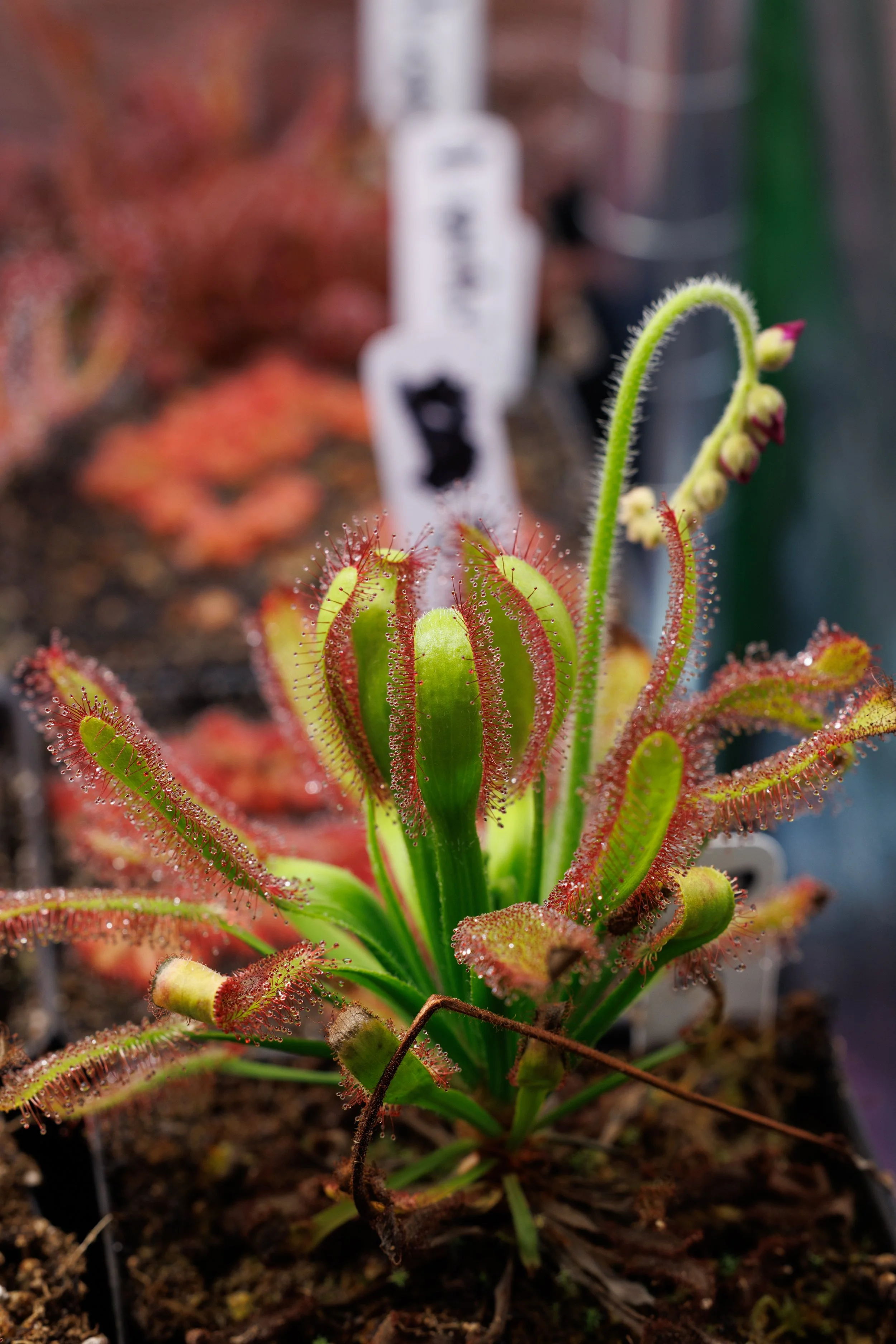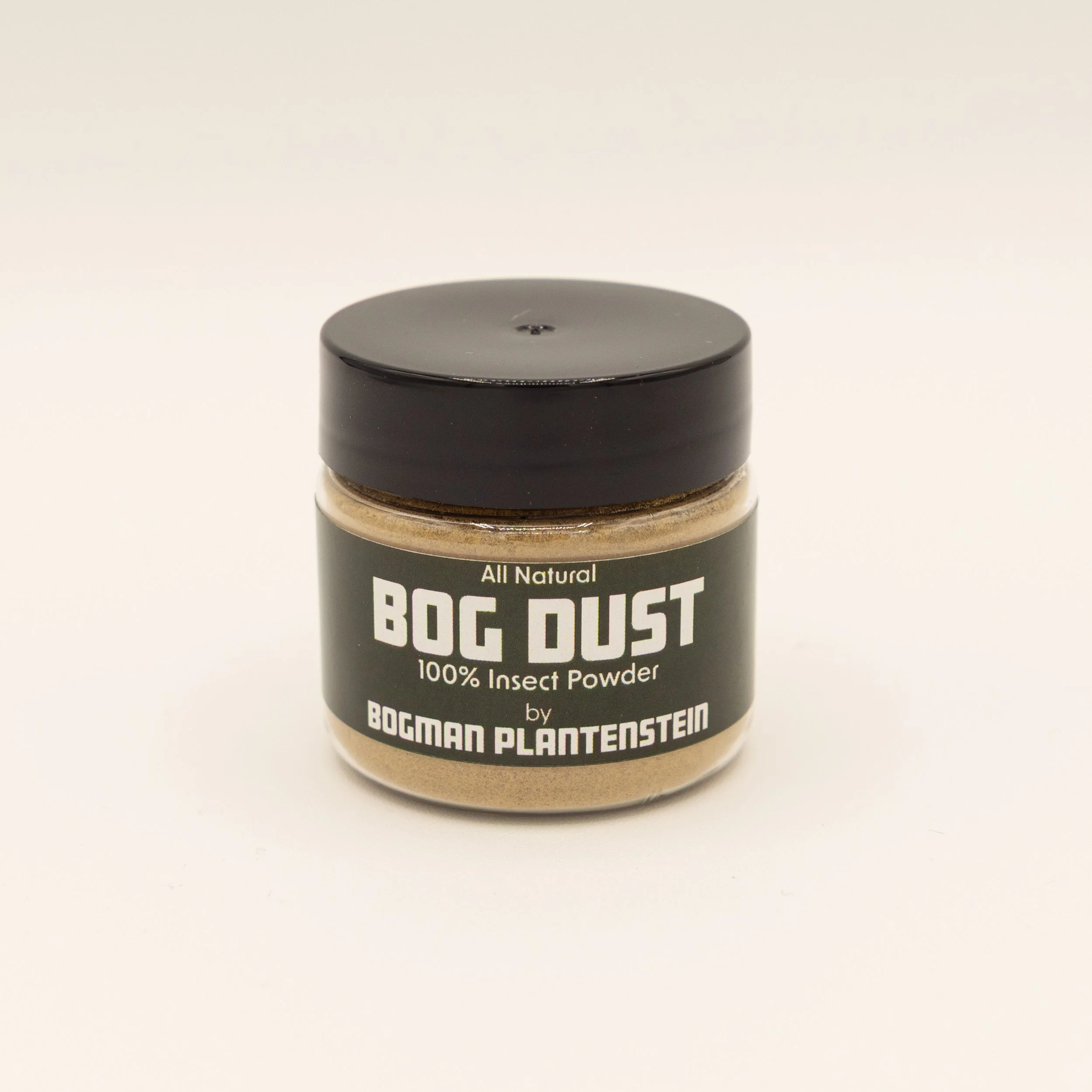 Image 1 of 3
Image 1 of 3

 Image 2 of 3
Image 2 of 3

 Image 3 of 3
Image 3 of 3




SEEDS - Drosera x ['Hercules' x 'Hercules’]
Description
Drosera x ‘Hercules’ is a vigorous and robust hybrid between Drosera capensis and Drosera aliciae. It looks like Drosera capensis but with extremely wide leaves and a dense growth pattern. Weirdly, it readily self pollinates and produces seed even as a hybrid between two disparate species. The flowers are large and bright purple. Overall, a large and hefty plant that is easy and attractive. This listing is the self-pollinated seeds from a Drosera x ‘Hercules’, so technically these are Drosera x [‘Hercules’ x ‘Hercules’]. Because ‘Hercules’ is a registered cultivar and its seeds will not be genetically identical, it is no longer ‘Hercules’, but ‘Hercules’ x ‘Hercules’ or ‘Hercules’ x self. The photos are of the parent plant and the progeny are expected to look extremely similar though can have minor variations which makes them even more interesting.
Drosera capensis and Drosera aliciae are two species from South Africa that grow in a Mediterranean climate. While capensis has long, strap-shaped leaves, aliciae has more wedge-shaped leaves. This hybrid was supposedly between capensis “albino” and aliciae so the tentacles stay a lighter red color and the plants remain green, even in strong light.
Each packet of seeds will contain 30+ seeds.
Growing Information
Climate: Temperatures between 40-90F are best. These seem to do fine at different humidity levels.
Light: Part to Full Sun or at least 20W per square foot of LED lighting. These grow best in high light.
Water: Water with the tray method of roughly 1-2” of water. Only use distilled, reverse osmosis, or rainwater because tap water is toxic to carnivorous plants due to high mineral content and chlorine.
Soil: Soil can be 50% peat: 50% perlite, though most peat or sphagnum based mixes will be good.
Feeding: Feed Insect Powder or lightly spray leaves with dilute Dynagro Foliage Pro or MaxSea at roughly 400ppm. Feed every 2-4 weeks to stimulate strong growth.
Description
Drosera x ‘Hercules’ is a vigorous and robust hybrid between Drosera capensis and Drosera aliciae. It looks like Drosera capensis but with extremely wide leaves and a dense growth pattern. Weirdly, it readily self pollinates and produces seed even as a hybrid between two disparate species. The flowers are large and bright purple. Overall, a large and hefty plant that is easy and attractive. This listing is the self-pollinated seeds from a Drosera x ‘Hercules’, so technically these are Drosera x [‘Hercules’ x ‘Hercules’]. Because ‘Hercules’ is a registered cultivar and its seeds will not be genetically identical, it is no longer ‘Hercules’, but ‘Hercules’ x ‘Hercules’ or ‘Hercules’ x self. The photos are of the parent plant and the progeny are expected to look extremely similar though can have minor variations which makes them even more interesting.
Drosera capensis and Drosera aliciae are two species from South Africa that grow in a Mediterranean climate. While capensis has long, strap-shaped leaves, aliciae has more wedge-shaped leaves. This hybrid was supposedly between capensis “albino” and aliciae so the tentacles stay a lighter red color and the plants remain green, even in strong light.
Each packet of seeds will contain 30+ seeds.
Growing Information
Climate: Temperatures between 40-90F are best. These seem to do fine at different humidity levels.
Light: Part to Full Sun or at least 20W per square foot of LED lighting. These grow best in high light.
Water: Water with the tray method of roughly 1-2” of water. Only use distilled, reverse osmosis, or rainwater because tap water is toxic to carnivorous plants due to high mineral content and chlorine.
Soil: Soil can be 50% peat: 50% perlite, though most peat or sphagnum based mixes will be good.
Feeding: Feed Insect Powder or lightly spray leaves with dilute Dynagro Foliage Pro or MaxSea at roughly 400ppm. Feed every 2-4 weeks to stimulate strong growth.


